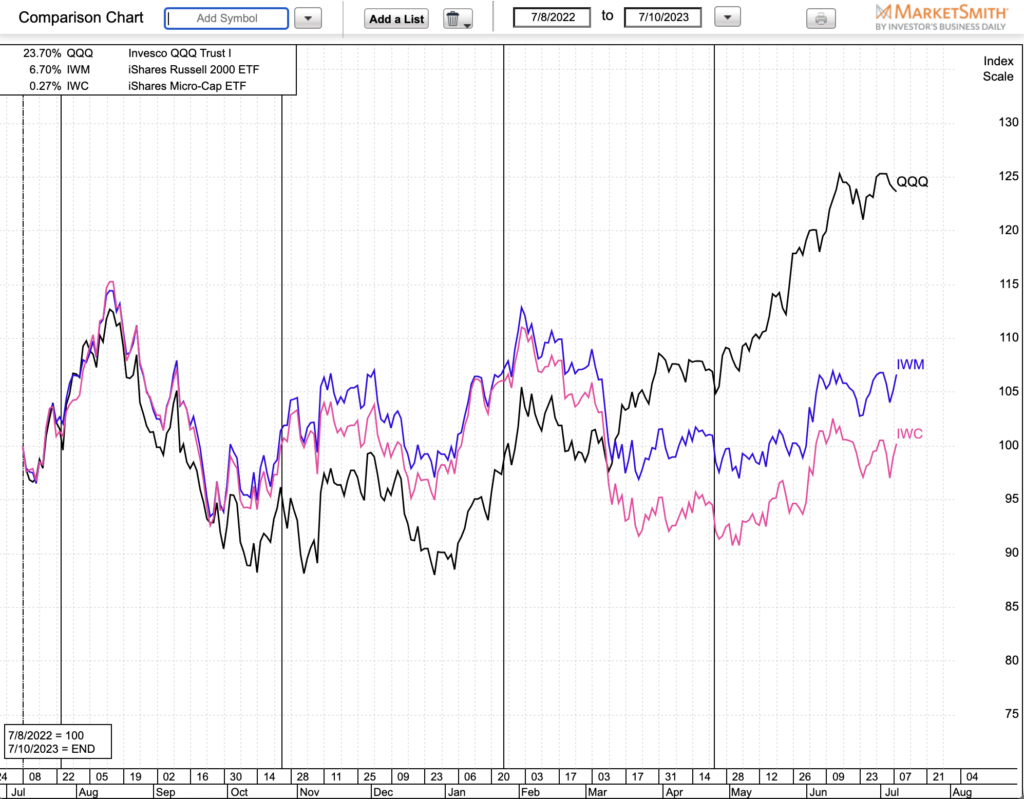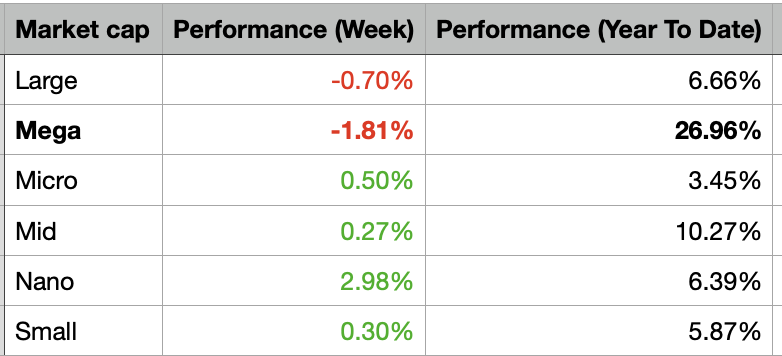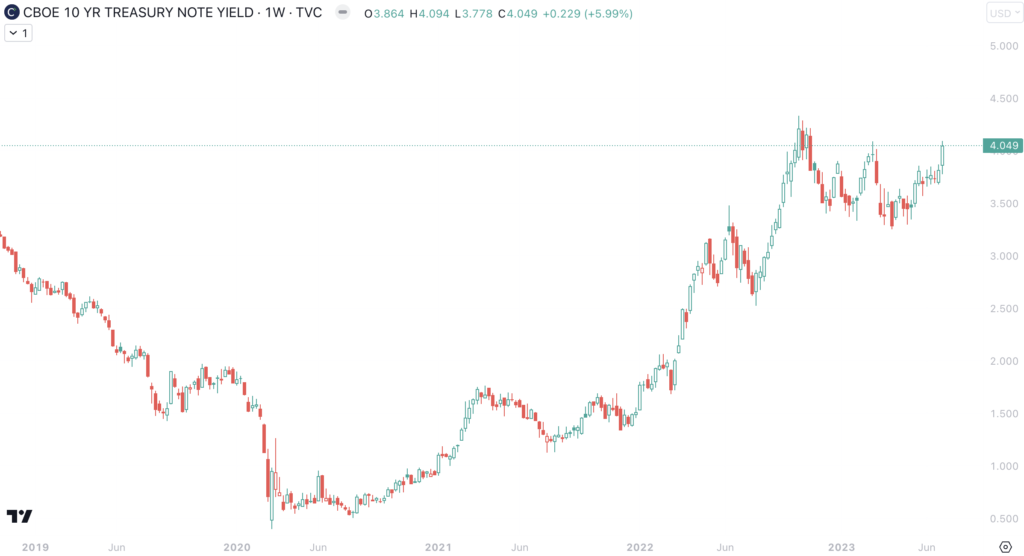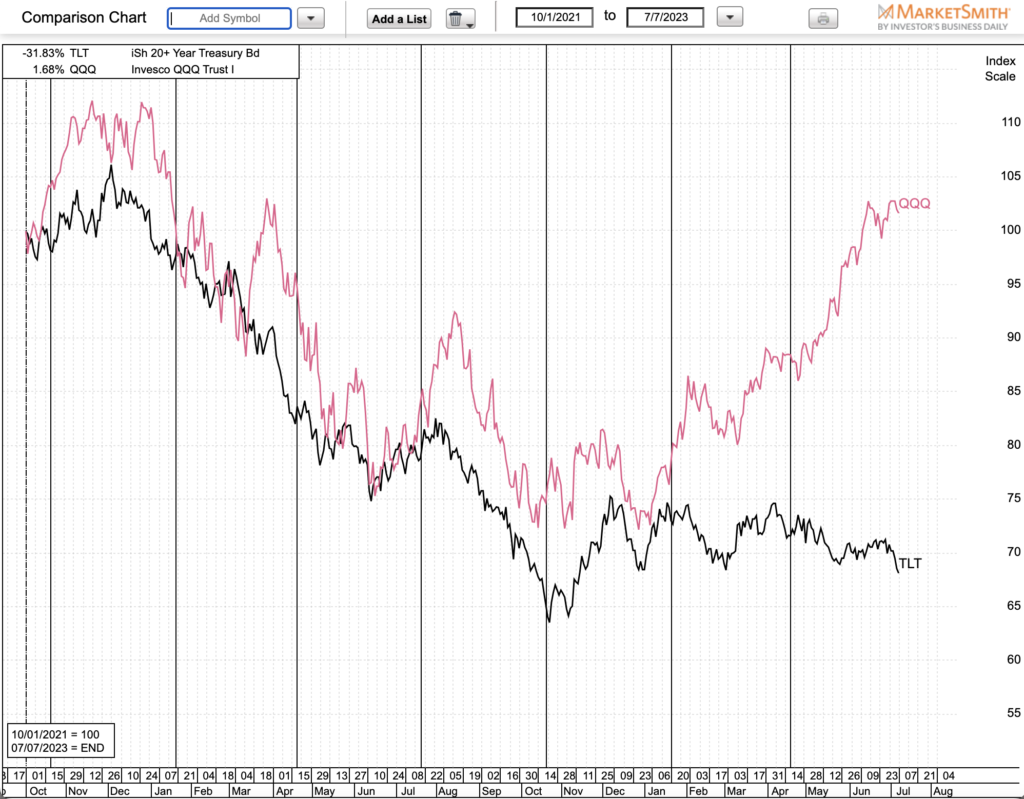MarketSmith powers the charts in this video.
There are two ways to approach a melt-up market:
- Participate in it chasing momentum with one foot out the door, meaning having an exit strategy because sooner or later all trends end, depending on your time frame of operation.
- Take profits on strength and wait for a pullback to get involved again.
One is trend following, the other is swing trading. Both approaches have their merits and can be lucrative. The price action last week was a good example of the pros and cons of both approaches. One lets you capture much bigger moves but it comes with having to go through bigger drawdowns. The other doesn’t produce huge winners but it keeps any drawdowns minimal.
Inflation continues to come down. Both, CPI and PPI came below estimates. This led to another dip in interest rates and a big rally in the stock market. Last week we saw big bounces and breakouts all around. In mega caps, mid-caps, and small caps. In tech, biotech, industrials, and financials. The US dollar pulled back to a new 52wk low. The stocks with the highest short interest went up the most. Less than a year ago, people were talking about potential bankruptcy in Caravan (CVNA). This year, it is among the best-performing stocks. At some point last week, it was up more than 800% year-to-date before giving back some of its gains.
Bull markets often correct through sector rotation and this is exactly what we saw on Friday, when most high-beta stocks pulled back while capital went into lower-volatility sectors like healthcare and consumer staples. It is a normal part of the cycle. When there’s too much frothiness and everyone thinks it is easy to make a lot of money every day, there’s usually a rug pull to beat some sense into the chasers.
The new earnings season has just begun. Judging by the significant increase in prices in the past three months, one can say that expectations are high. This doesn’t mean they cannot be exceeded in select cases but one has to be aware of the higher hurdle ahead. Expectations matter. We all saw what happened with bank stocks on Friday. JPM started to rise two weeks before its earnings report. They crushed estimates and gapped up, only to give their entire gain up later in the day. Profit takers overwhelmed any new demand for the stock, at least for the time being. Pay attention to how the market reacts to earnings because this will be the key for the duration of the current rally.
Try my subscription service which includes a private Twitter feed with option and stock ideas, emails with concise market commentary and actionable swing, intraday, and position trade ideas, the Momentum 40 list of market leaders, and much more. See some of the recent testimonials.
PERFORMANCE
Here’s a Google spreadsheet tracking all closed options and stock ideas shared on my private Twitter stream and emails for subscribers.
Check out my free weekly email to get an idea of the content I share with members.
I published a new trading book recently. Check it out on Amazon.
Disclaimer: Everything I share is for educational and informational purposes only and it should not be considered financial advice.



